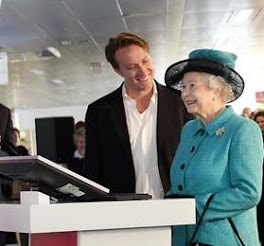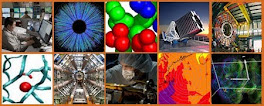There have been two interesting responses from (gastroenterologist) Steve Hammond and (pharmacist) Mike M- see tail end of previous posting re the chin level crease on the TS. (I maintain the latter gives
important clues as to how the image was imprinted).
Rather than respond to them in detail (which I was minded to do, but am presently a bit pushed for time) I’ll
simply say this.
The objections they raise would be serious ones if the model I
propose for Shroud imprinting were either of the two previously described, set in concrete. But they are not, (phew, with a single bound he was free) since for some time I have been moving towards a third model that constitutes effectively a fusion of the two, i.e. incorporating elements of both in such a way as to
address suspected weak points in both AND provide an important plus point.
What prompted the new thinking? There were a number of things, but this particular image below fromshredstory shroudstorydotcom that I referred to (and recommended recently) probably lodged in the subconscious and began gradually to link up with other inklings:
What prompted the new thinking? There were a number of things, but this particular image below from
It's the way that face appears to be semi-embedded in a plane (or should one say plain?????), that appearance being accentuated by the oblique viewing option thoughtfully provided by the ImageJ software).
I hope my two thoughtful critics won’t mind if I use this
post to flag up the genesis of a new “improved” model, one l which I consider can
provide satisfactory answers to their reasonable and indeed perceptive
objections, but leave the details for a day or two, once they have recognized
that this blogger’s ideas are evolving by the day. (And sometimes it takes a
little flak to move things along at maybe a faster pace than I might have
wished!).
The gist of the two objections to my “baked-in crease” idea
was as follows. First the allegedly baked-in crease (one of them) extends beyond the body image onto supposedly blank
image-free background where there is presumably nothing behind the linen to provide either a hot surface or resistance to imprinting
pressure. Second, the twin track crease, with a pale centre, still has some
coloration in the central area, suggesting it did not escape scorching through being out of direct
contact with hypothetical hot template. Why not?
OK, here’s a hint to the way my thoughts are now going (just a hint in case I change my mind). If
things gel after looking at more images (newly enhanced Shroud Scope and Shroud 2.0) I will hopefully have something more concrete
to say in a day or two.
First: the Mark 1 model, proposed on this site over 2 years
ago, was described as the ‘sand bed model’. Linen was placed over cold sand,
and the hot template thrust in from above, with semi-yieding sand providing
resistance and thus contact pressure. But there were drawbacks (temperature
control, not knowing the progress of scorching, too much risk of over-scorching
or getting edges that were too well-defined, not “fuzzy” etc etc ).
More recently, I turned that mechanism on its head, literally,
by proposing the 'LOTTO' model. There,
the heated template was laid on a support, linen was spread on top, then a
damp overlay (e.g. sacking) and the latter then patted around the highest
relief of the template. That made for easier temperature control (being judged
by finger tips), the ability to mould linen manually around relief, and a
fuzzier end-result, confirmed by experiment.
But there is still a drawback using either of these methods –
excessive imprinting of the sides of a 3D template (unless a customised
bas-relief were fabricated and used) with unsightly lateral distortion.
The new model combines elements of the two. I call it the “pseudo-bas
relief” model (hint hint) , in which an essential role for a sand bed (or similar) is restored.
I believe there is corroborating evidence on the TS image
for a role for some grainy material (like SAND) in the imprinting process, one that might meet the
objections raised by my two sharp-eyed critics. Be on the lookout for another posting in the
next few days. First I must do a belated short posting on the three-instalments Psychology Today attack on Shroud pseudoscience, and bemoan yet again the not-fit-for-purpose Google search engine.




















No comments:
Post a Comment